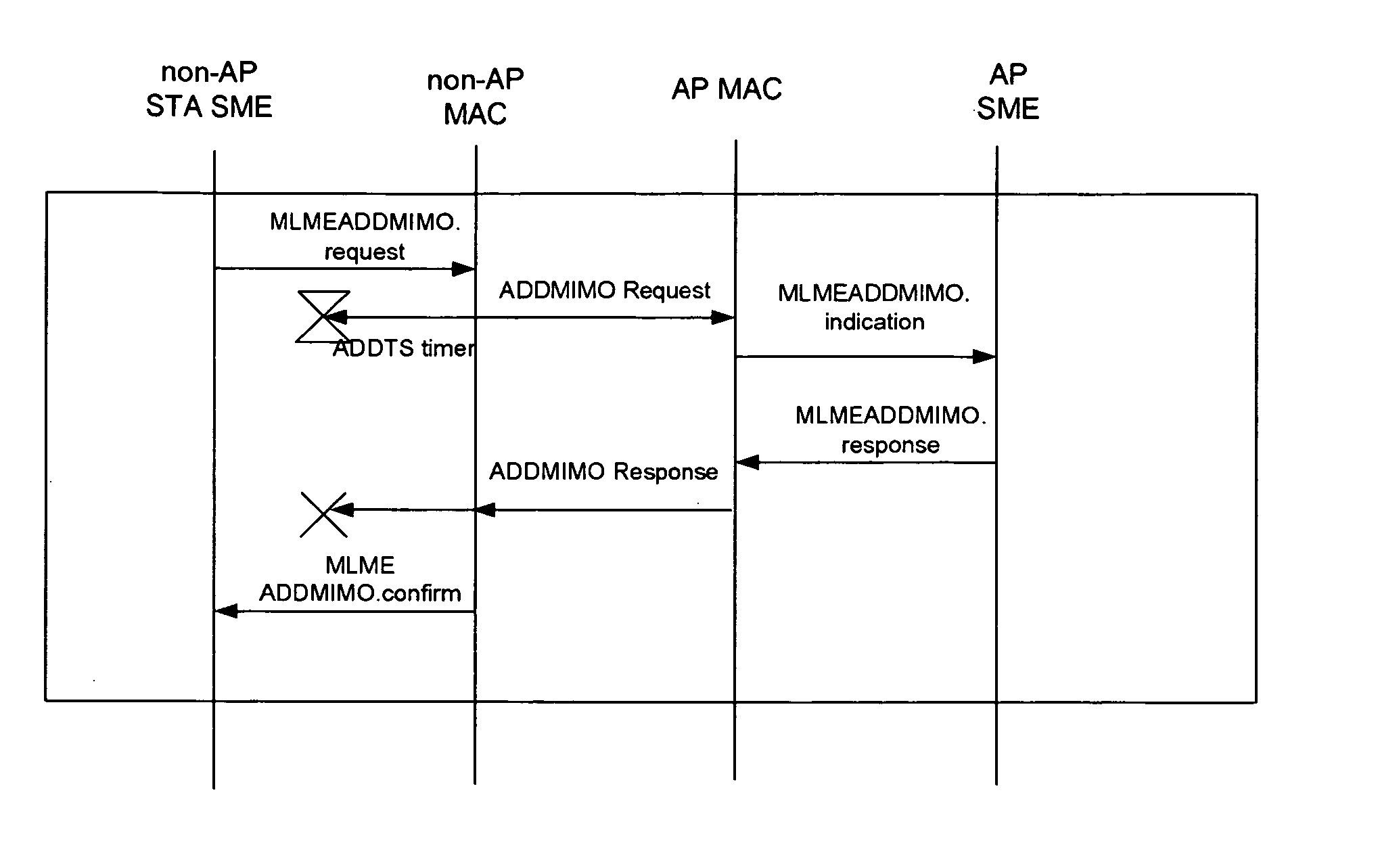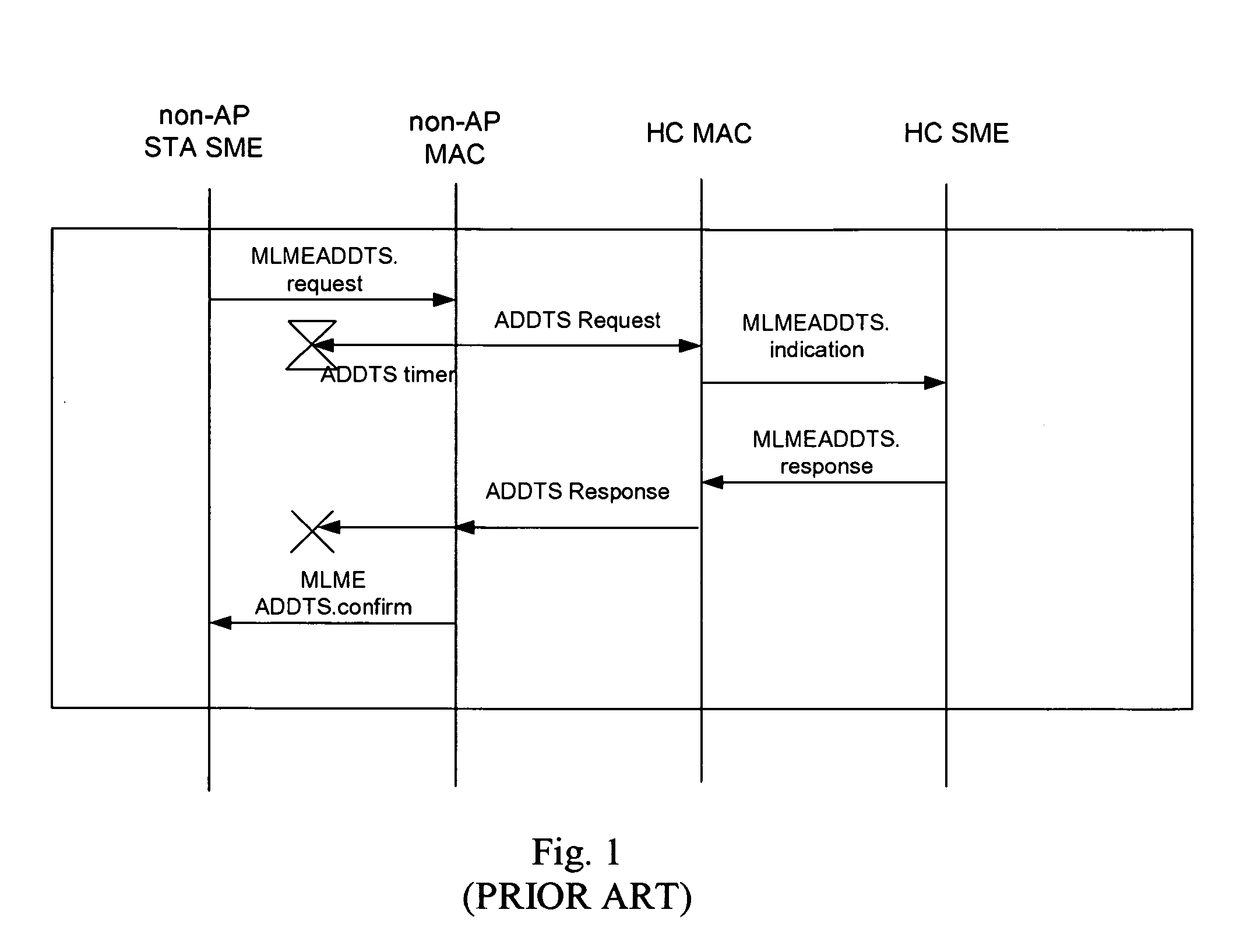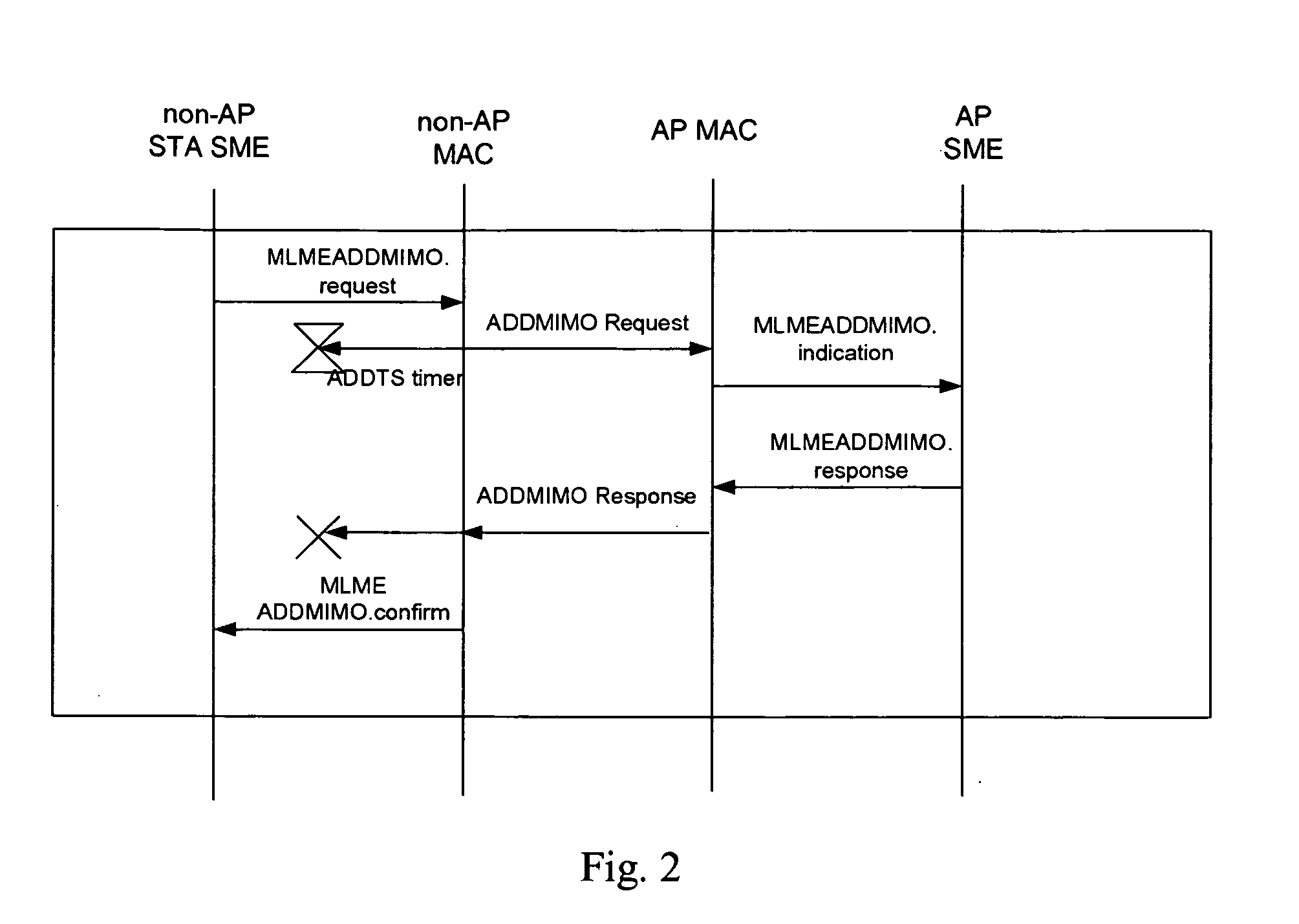Method to negotiate consumed power versus medium occupancy time in MIMO based WLAN systems using admission control
a technology of admission control and consumption power, applied in the field of mimo enhancement, can solve the problems of increasing the amount of power used for signal processing, and achieve the effects of reducing air time, simple hardware solutions, and saving power
- Summary
- Abstract
- Description
- Claims
- Application Information
AI Technical Summary
Benefits of technology
Problems solved by technology
Method used
Image
Examples
first embodiment
[0028] In a like manner two four bit fields may be appended to the convention TSPEC:
TABLE 2MIMO Channel FieldNumber of Tx ChannelsNumber of Rx Channels
[0029] These two field indicate the number of channels that the requestor is specifying for transmission, i.e., the Number of Tx Channels field and reception, i.e., the Number of Rx Channels field, on the medium. These two four bit fields are referred to collectively herein as the “MIMO Channel” field. The TSPEC negotiation features present in IEEE 802.11e are used to negotiate the actual number of channels used, which, in general represents a tradeoff of power to be saved versus medium access time.
[0030] This embodiment is preferred over the next described embodiment, because it allows for explicit negotiation within an existing framework.
[0031] This TSPEC object is used as an element in the Add Traffic Stream (ADDTS) QoS management action frame, with an action set to “request,” as in §7.4.2.1 of IEEE 802.11e, which is used by a ...
second embodiment
[0035] An alternative embodiment is for the TSPEC Minimum PHY rate to convey this information implicitly, and use the minimum number of channels to cover the Minimum PHY rate, however, as the minimum PHY rate is related to an underlying Physical Layer, within a single channel, it provides less flexibility than does the previous embodiment, may be harder to achieve interoperability because the Minimum PHY rate parameter is now “overloaded,” and allows fewer “degrees of freedom’ in the negotiation (the Minimum PHY rate in a channel could be increased for SISO operation or decreased for MIMO operation, and depends on the application which would have better performance or occupy less medium time.)
third embodiment
[0036] Yet another embodiment is to use a separate action management frame exchange sequence that mirrors the TSPEC negotiation in IEEE 802.11e. This provides more flexibility and allows the TSPEC negotiation mechanism to be decoupled from the resource negotiation mechanism. Moreover, it provides for a simple extension to AP-to-AP negotiation of MIMO parameters, useful for Wireless Distribution Systems.
[0037] Thus the relevant Action Management Frame Types involved are: [0038] Add MIMO Request Frame, which requests a number of channels for transmit and receive; [0039] Add MIMO Response Frame, which is the response the AP makes in response to the request frame, which allows the AP to manage medium occupancy time on the channel; and [0040] Delete MIMO Request Frame, which allows a STA to revert back to SISO, i.e., one channel for transmit / receive, operation.
[0041] These frames include appropriate identifying fields within the syntax of IEEE 802.11 to uniquely identify these frames; ...
PUM
 Login to View More
Login to View More Abstract
Description
Claims
Application Information
 Login to View More
Login to View More - R&D
- Intellectual Property
- Life Sciences
- Materials
- Tech Scout
- Unparalleled Data Quality
- Higher Quality Content
- 60% Fewer Hallucinations
Browse by: Latest US Patents, China's latest patents, Technical Efficacy Thesaurus, Application Domain, Technology Topic, Popular Technical Reports.
© 2025 PatSnap. All rights reserved.Legal|Privacy policy|Modern Slavery Act Transparency Statement|Sitemap|About US| Contact US: help@patsnap.com



